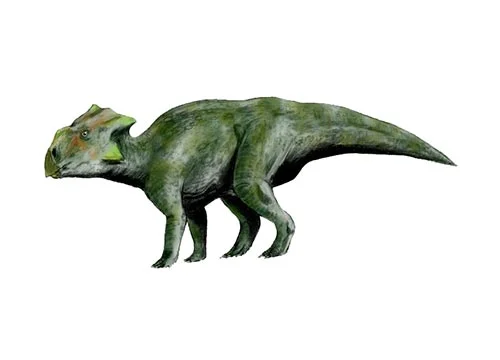Bagaceratops (Small horned face)

Bah-gah-seh-rah-tops
Teresa Maryanska and Halszka Osmólska - 1975
Herbivore
Estimated 1-2 meters long
Ceratopsian
B. rozhdestvenskyi (type)
Mongolia
Late Cretaceous, 85-80 million years ago
Bagaceratops Facts
Bagaceratops, meaning “small horned face” in Greek, was a small, bipedal dinosaur that measured approximately 2 meters in length and weighed between 50 and 100 kg. Despite its relatively small size, Bagaceratops was well adapted for life in the late Cretaceous environment, with a strong, sturdy body and sharp, grasping claws on its feet.
One of the most distinctive features of Bagaceratops was its skull, which was adorned with two small horns above the eyes and a larger, more prominent horn on the nose. These horns were likely used for display, and may have also served a defensive function. Bagaceratops also had a large frill at the back of its head, which may have been used for thermoregulation or to make the dinosaur look larger and more intimidating to potential predators.
Bagaceratops was part of a group of dinosaurs known as ceratopsians, which also included well-known species like Triceratops and Styracosaurus. Ceratopsians were among the last dinosaurs to evolve before the mass extinction event that wiped out the dinosaurs, and Bagaceratops provides valuable insights into the evolution of this fascinating group of dinosaurs.
In addition to its scientific significance, Bagaceratops is also of great interest to dinosaur enthusiasts and amateur paleontologists. Its small size and distinctive skull ornamentation make it a fascinating subject for study, and its discovery in Mongolia adds to our understanding of the late Cretaceous fauna of Asia.
In conclusion, Bagaceratops is a unique and fascinating dinosaur species that provides important information about the evolution of ceratopsians and the late Cretaceous fauna of Mongolia. Whether you’re a seasoned paleontologist or just starting to learn about dinosaurs, Bagaceratops is sure to captivate your imagination and inspire your interest in the field of paleontology.



